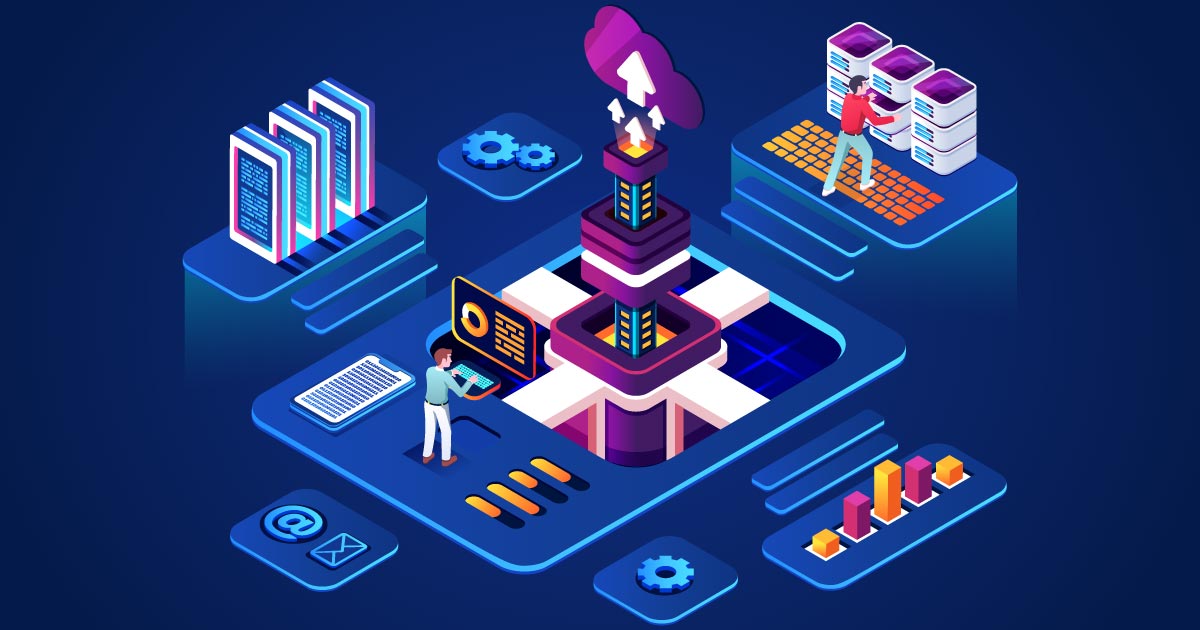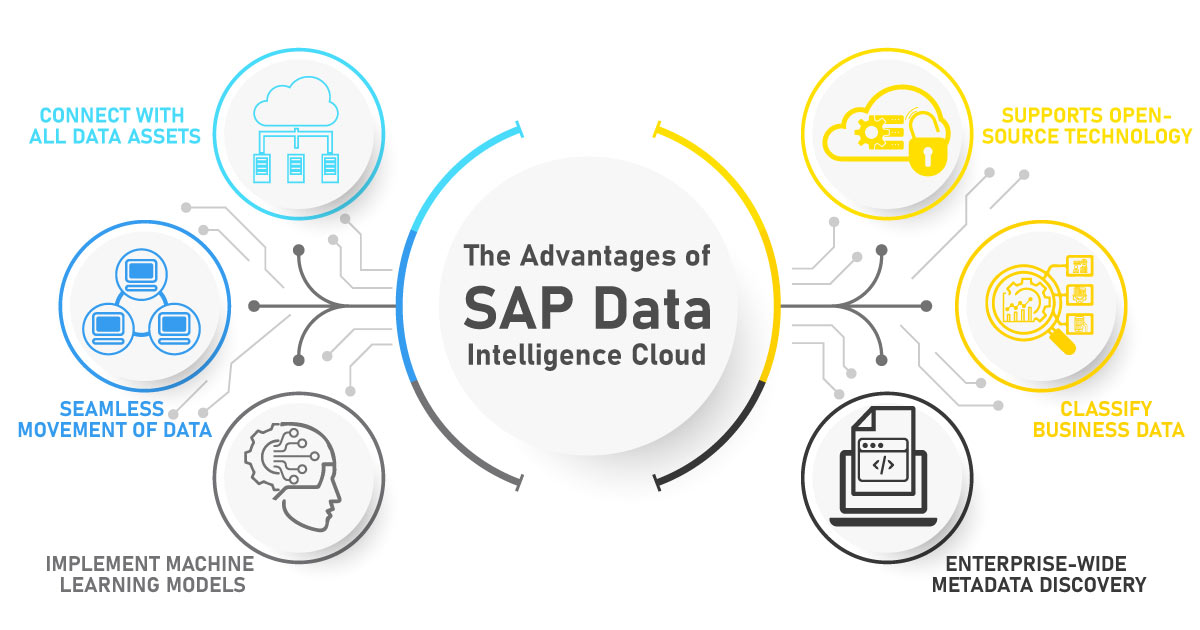Intelligent enterprises consume integrated and enriched data at the right time, in the right format to gain accurate insights to thrive in a highly competitive digital environment. Data fabric delivers a unified and integrated end-to-end platform that integrates data from various applications and sources to facilitate obtaining real-time analytics for successful business outcomes.
A modern data fabric design enables the replacement of independently deployed and maintained data management technology and infrastructure using a single integrated data architecture. Now, this can address extreme levels of diversity, distribution, scale, and complexity of enterprises’ data assets. The architecture needs to ensure that the data fabric supports the combination of different data delivery styles dynamically (through metadata-driven design) that are demanded by existing and upcoming use cases.
Data fabric architecture consolidates knowledge graphs, AI, and metadata capabilities enabling data integration coupled with consistent access and exchange of data across the organization. Most importantly, data fabric relies on robust data governance policies for unifying data management. Hence, it is a more advanced solution, working to improve existing data processes. It is an industry-agnostic concept that is relevant across domains. Data fabric architecture can help:
- Obtain enterprise intelligence. A bird’s-eye view of organizational performance using intuitive tools.
- Get operational intelligence as a shift from scheduled to requirement-based maintenance activities for key operations.
- Focus on a 360-degree view of customers by tracking customer activities across various customer touch points.
- Adhere to regulatory compliance by using AI-enabled data governance policy enforcement, automatic classification of data assets, and masking of data.
- Transform data fabric into an internal search system for relevant access to authorized stakeholders.

The Components of Data Fabric Architecture
- Data management practice defines the profile of stakeholders who can access business information and data detailing. It also includes information on how often data would be updated and the extent of masking encryption and transformation.
- The knowledge graphs and AI-powered metadata activation ensure unified data governance while safeguarding the security and accuracy of organizational data.
- Data ingestion helps users to connect to all types of business information regardless of its localization and volume. This allows combining multiple data types, such as video recordings from brick-and-mortar stores. It also aggregates information in streams or batches in real-time.
- Data processing is a staging area for data as per types and formats that can be filtered for further usage.
- Data orchestration cleanses, enriches, aggregates and reformats processed business information to meet the requirements of the target data repositories or the applicable software application.
- Data discovery helps businesses and IT specialists to apply data for recognizing dependencies and identifying inaccuracies.
- Data access delivers data to multiple downstream consumer applications or people, or the data marketplace, for business users.
A highly functional product and master data fabric architecture can meet the business need for speed, flexibility, and innovation. Getting over legacy data architecture deployed in the business needs the following changes to be implemented.
- Focus on building flexible and extensible data schemas with lesser physical tables.
- Build a domain-based architecture to eliminate clusters of centralized data lakes. Businesses can use data virtualization techniques to organize and integrate distributed data assets. The domain can incorporate a data roadmap to facilitate better searchability that covers data, integration, storage, and architectural changes.
- Doing away with data silos that usually affect business operations and data analytics initiatives.
- A complete and centralized product information system and mobile device management application help automate the management of all information across diverse channels as well as ensure clean internal data is available for access.
- A strong and intuitive, real-time data fabric architecture helps enterprises process and analyze data for analytics to track customer behavior that can help study use of various features, UX changes, usage, etc.
- Building a design that can handle data from both structured and unstructured sources and formats without missing out on essential information to ensure there is seamless collaboration.
- With cost-effective, cloud-based PIM or MDM solutions, ready-use and configured solutions allow for data to be seamlessly uploaded for strategic marketing campaigns.
- Modular data architectures use the best, open-source components that can be upgraded to embrace newer technologies as needed without affecting the other aspects of the architecture. An independent data layer that includes commercial databases and open-source components can also be set up.
Why SAP Data Intelligence Cloud?
SAP Data Intelligence Cloud is a next-generation data platform that empowers businesses with the capabilities needed to integrate, orchestrate, enrich and transform enterprise’s data, regardless of the business objective of such data.
SAP Data Intelligence Cloud helps streamline, operationalize, and more importantly govern innovations using machine learning. Gemini Consulting & Services has the expertise and experience in implementing SAP Data Intelligence Cloud for enterprises operating in various business areas. Contact us to know how to use SAP Data Intelligence Cloud to optimize governance and minimize compliance risks with comprehensive metadata management rules.
Data Intelligence Cloud embraces the varied data landscape of today’s business and provides the right suite of tools designed to help understand, manage and process data effectively. Since it is a cloud-based service, scalability is easier.

- Connect with all data assets, whether on-premise or on the cloud structured or unstructured.
- Orchestrate complex data pipelines to ensure seamless movement of data across the business.
- Develop and implement automated Machine Learning models quickly without data scientists initially and support advanced data science models as and when the business is ready.
- Supports open-source technologies such as Jupyter, Python, TensorFlow and Apache Spark.
- Indexes, profiles, and classifies business data within the business landscape to help identify valuable assets with a focus on quality.
- Give the users an enterprise data catalog that enables enterprise-wide metadata discovery and visibility, using terms they understand, to help them find the right data, faster.
By leveraging SAP Data Intelligence, and the data orchestration layer of SAP’s BTP, enterprises can transform distributed data silos into vital data insights, delivering relevant outcomes. It uses SAP Data Intelligence to process distributed data and provides users with intelligent, relevant, and contextual insights with integration across the IT landscape.



